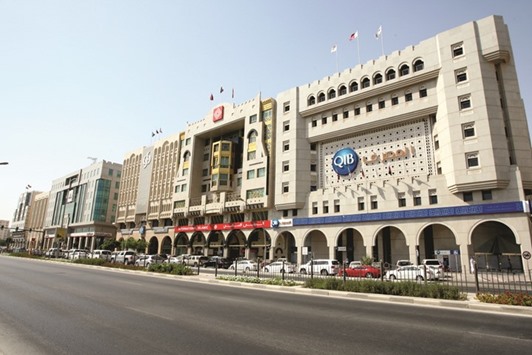Qatari and Omani lenders benefit the most from easing funding pressures due to stabilising oil prices, large international sovereign debt issuances and lower credit growth, according to global credit rating agency Moody’s.
“Omani and Qatari banks will benefit the most from easing funding conditions, followed by banks in Saudi Arabia and the UAE. However, Bahraini and Kuwaiti banks will continue to have the strongest funding and liquidity profiles in the region,” Mik Kabeya, analyst at Moody’s said.
Both banking systems face funding pressure as reflected by loan-to-deposit ratios of 103% and 104%, respectively, at June 2016. However, the Qatar government has higher financial reserves than the Oman government, providing it with a higher capacity to support local liquidity if necessary, the rating agency said.
Expecting oil prices to average $40-$60 until 2018 compared to $43 in 2016, with lows of $26 in early 2016, it said stabilising oil prices will increase government revenues, given their high reliance on hydrocarbons, though they will remain below the fiscal break-even oil prices for most GCC (Gulf Cooperation Council) countries, including Qatar, for which it is $62.1, as per the International Monetary Fund.
High government dependence on oil, heavy reliance on government deposits (26% of deposits at year-end 2016) and solid credit growth levels (12.1% credit growth in 2016) would continue to pressure Qatar’s banks’ funding positions, Moody’s said.
Government reserves accounted for 213% of Qatar’s GDP at year-end 2016, compared to 107% for Oman. Expecting non-oil real GDP growth of 6.5% for Qatar this year, Moody’s said credit growth would remain solid at high single digit, reflecting the financing of corporate activity related to government-financed projects in the three countries, including the FIFA World Cup 2022 preparations.
Higher government oil revenues will translate into higher government deposits in the region’s banking systems. Banks in the GCC are heavily reliant on deposits from their government and related issuers.
Although Qatar refrained from liquidating financial assets and mixed domestic and international debt issuance in 2015, it said the tight liquidity situation in the domestic banking system led the government to tap international markets.
The sharp drop in oil prices in 2015-16, limited domestic markets’ listed depth and a favourable global interest rate environment underpinned record aggregate global debt issuance by the GCC governments in 2016.
The low indebtedness of most GCC countries provides some room for the governments to raise international financing. General government debt accounted in December 2016 for 13.4% of the GDP in Saudi Arabia, 19.3% in Kuwait 4, 30.5% in Oman, 21.7% in the UAE, 53.6% in Qatar and 73.9% in Bahrain, it said, adding the GCC governments increased their international US dollar debt issuances in 2016 to a total of $38.9bn compared to $2.1bn the previous year.
Fiscal consolidation will likely lower issuance volumes in the GCC in 2017, while still keeping them at historically high levels, according to Moody’s.
The surge in sovereign issuance in 2016 has been met with very strong investor demand. Search for yield and the gradual recovery in oil prices from the second quarter of 2016 have supported the GCC sovereign bond issuance, which was reflected in large order books and tightening yields following the deal closures.
Business / Business
Qatari and Omani lenders benefit the most from easing funding pressures: Moody’s

Although Qatar refrained from liquidating financial assets and mixed domestic and international debt issuance in 2015, Moody’s says the tight liquidity situation in the domestic banking system led the government to tap international markets.



